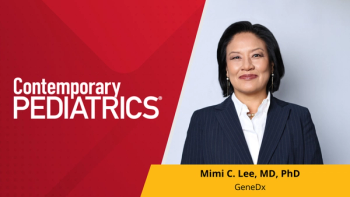
AAP calls for limiting e-cigarette sales
Banning sales to individuals aged younger than 21 years is just one of the proposals in the American Academy of Pediatrics’ (AAP) newest call to action in the fight against vaping.
Whereas headway has been made in reducing traditional cigarette use in teenagers, the American Academy of Pediatrics (AAP) is leading a new call to arms over vaping.
Twenty percent of high school students and 5% of middle school students reported using e-cigarettes last year, according to the AAP-a 75% jump over 2017. The trend threatens to disrupt 5 decades of gains against tobacco use, according to the AAP. To counter this threat, the organization is now calling for new federal regulations, including setting a minimum age to purchase e-cigarettes at age 21 years, banning online sales and youth-targeted marketing of e-cigarettes, and stopping the sale of certain flavors of vaping products.
Although e-cigarettes are sold under the guise of being “safer” than cigarettes, they still deliver nicotine, which in itself is both highly addictive and dangerous to the cardiovascular system and damaging to the developing brain. Additionally, young persons who begin with e-cigarette use are 3.6 times more likely to go on to use traditional cigarettes, the AAP notes.
Action steps so far
The US Food and Drug Administration (FDA) was asked in 2017 to expand its review of tobacco products to include e-cigarettes, but the agency was sued in 2018 by the AAP and a number of other organizations for not doing enough to regulate e-cigarettes.
The AAP
Brian P. Jenssen, MD, MSHP, FAAP, assistant professor of Pediatrics at the University of Pennsylvania Perelman School of Medicine, Philadelphia, primary care pediatrician at the Children's Hospital of Philadelphia (CHOP) Care Network, and policy chair of the AAP Section on Tobacco Control Executive Committee, co-authored the study for the AAP and says there is a critical need for better intervention in the area of e-cigarette use among adolescents and young adults.
“E-cigarettes are addicting a new generation of young persons to nicotine and threaten to unravel 5 decades of public health gains regarding tobacco use,” Jenssen says. “Strong federal regulation is necessary to protect youth from e-cigarettes.”
Whereas efforts have been made to curb the sales and marketing of these products, Jenssen says these efforts so far have not produced adequate results.
“In 2018, the FDA announced plans to limit the in-person sale of some flavored e-cigarettes to age-restricted locations, heighten age-verification for online sales, and target e-cigarette marketing directed at children. To date, these actions have not been implemented,” he says. “
What’s next
Existing regulation requires persons to be aged 18 years to purchase these products, yet sales continue to underage users. When asked how a limit of 21 years of age could help, Jenssen says it will take more than one intervention to combat this issue.
“Nicotine is highly addictive, and we know that the earlier someone uses nicotine products in childhood, the more difficult it is to quit. Most adult smokers started using tobacco before age 18 years,” Jenssen says. “Yes, multiple public policy efforts are needed to reduce youth access to e-cigarettes, including raising the sales age for e-cigarettes and e-liquid to 21 years, and banning Internet sales of e-cigarettes and e-liquid.”
Pediatricians play a vital role in helping to reduce vaping in adolescents, including screening for the use of tobacco products, advising families to limit tobacco products use around children, and offering tobacco cessation programs that do not include the use of e-cigarettes as a method to stop smoking traditional cigarettes.
“We hope the AAP policy statement can serve as a concise reference on this emerging topic, so pediatricians can help teenagers and their families live nicotine-free and tobacco-free lives,” Jenssen says.
Newsletter
Access practical, evidence-based guidance to support better care for our youngest patients. Join our email list for the latest clinical updates.









